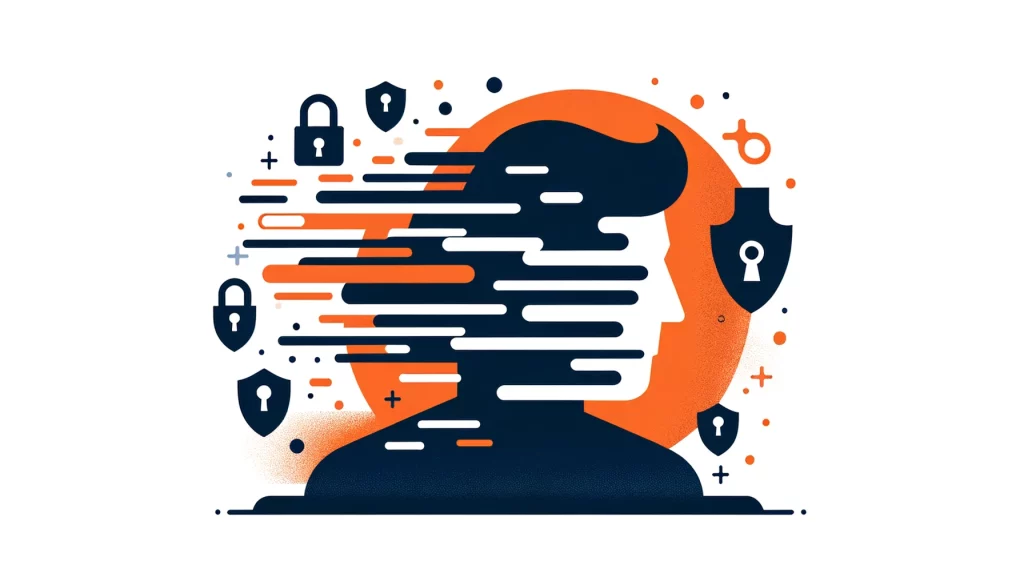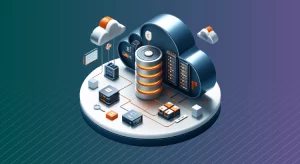
Data Anonymization

In the modern digital landscape, organizations collect and process an astounding amount of personal information. From healthcare records to online shopping habits, this serves as a valuable asset for businesses, researchers, and governments.
This means we must protect people’s privacy and ensure the safety of their information. This is a significant responsibility that we have.
This responsibility is not only an ethical obligation but also a legal requirement in many jurisdictions. Data anonymization emerges as a crucial solution to address these concerns.
What is Data Anonymization?
Data anonymization involves removing or encrypting personally identifiable information (PII) from a dataset. This process maintains the initial structure and its usefulness for analyzing.
Organizations can protect individuals’ privacy by anonymizing, while still benefiting from the insights and value it offers.
Understanding the importance of anonymization, its various techniques, and its applications across different industries is essential in today’s world.
The Importance of Anonymization
Anonymization holds significant importance in the era of tech. Protecting personal information has become a paramount priority for organizations worldwide.
Unauthorized access to sensitive data and its breaches can result in serious consequences, including damage to reputation and legal responsibilities.
The GDPR in the European Union and HIPAA in the United States require strict protection of personal information. The GDPR is a regulation in the EU that requires strict protection of personal data. HIPAA is a law in the US that also demands the safeguarding of personal information. Both regulations emphasize the importance of protecting personal information.
Benefits of Data Anonymization
Data anonymization provides a robust solution to these challenges. By removing or obscuring personally identifiable information, organizations can substantially reduce the risk of leaks and ensure compliance with privacy regulations.
Anonymized datasets are not as strictly regulated as personal details. This allows organizations to use the information for different purposes. They can still follow the rules and protect the rights of individuals.
Techniques for Data Anonymization
To achieve effective data anonymization, organizations employ various techniques, each with its own strengths and limitations. Data masking is a technique that involves changing sensitive resources by encrypting, shuffling, or substituting certain elements.
Dynamic masking can instantly accomplish this task. Another option is to create a separate, anonymized copy of the database using static masking. Masking preserves the format and structure of the data while rendering it unfamiliar to unauthorized parties.
Anonymity is another technique that replaces personally identifiable specifics with pseudonyms or false identifiers. For example, someone might replace a person’s name with a random string of characters.
This approach allows to analyze data without revealing the actual identities of individuals. Aliasing reverses the process, allowing for recovery of the original data if needed, such as for legal reasons.
Pseudonymization is a technique that reduces the segmentation of info by grouping it into broader categories or ranges. Instead of storing specific ages, an organization may categorize individuals into age ranges such as 18-25, 26-35, and beyond.
Data swapping, also known as shuffling or permutation, rearranges the values of certain attributes within a dataset. This method preserves the general statistical characteristics of the resources, while making it challenging to associate particular records with specific individuals.
Data perturbation introduces small, random changes to the original dataset. You can do this by adding noise, rounding values, or applying mathematic transformations.
The aim is to keep the resources anonymous while still maintaining its statistical properties. Important to make sure that any changes do not impact original accuracy or usefulness.
Uses of Anonymization
Different sectors utilize data anonymization, each presenting its own distinct obstacles and needs. In healthcare and medical research, organizations and researchers study patient information. They do this to improve treatments, understand diseases, and develop new medications.
Medical records must contain highly sensitive personal information that requires protection. By anonymizing patient’s personal info, healthcare providers can conduct research and collaborate with external parties while maintaining patient privacy and complying with regulations like HIPAA.
Businesses in marketing and customer analytics collect a lot of customer data. They use it to personalize experiences, improve marketing campaigns, and enhance products and services. However, the use of personal info for these purposes raises privacy concerns.
Data anonymization allows companies to analyze customer behavior and preferences without exposing individual identities, enabling decision-making while respecting customer privacy.
Software development and testing also benefit from data anonymization. Developers often require access to real-world data to build and test applications. However, using actual production info can pose security risks and violate privacy regulations.
Organizations can protect sensitive info by removing personal information from datasets used for testing and development. This ensures that the data is not at risk in less secure settings. Developers can then use real resources without compromising people’s privacy. This allows developers to use real data without putting people’s privacy at risk.
In the financial services sector, institutions handle highly sensitive customer data, including transaction records, credit scores, and personal identification information. Anonymizing it is crucial for protecting customer privacy and complying with regulations.
At the same time, financial organizations need to analyze data to detect fraudulent activities and improve risk management. Anonymization enables secure collaboration without exposing individual identities.
Challenges and Considerations
While anonymization is a powerful tool for protecting privacy, it is not without challenges. One of the main concerns is the risk of re-identification.
Another consideration is the balance between privacy and utility. Anonymization techniques that are too aggressive can render the info useless to analyze, while insufficient anonymization can leave individuals vulnerable to privacy breaches.
Organizations must strike the right balance based on their specific use cases and regulatory requirements.
Conclusion
Data anonymization is important for protecting personal information in the digital age. It enables effective use of data while maintaining privacy.
Companies can follow rules, reduce the chance of leaks, and build trust by hiding or deleting personal information. This helps them maintain compliance with regulations. It also reduces the risk of exposing sensitive information. Additionally, it fosters a sense of security and reliability among customers and partners.
However, anonymization is not a one-time solution. It requires ongoing commitment, monitoring, and adaptation to keep pace with evolving threats and technologies.
Organizations must invest in robust anonymization practices, regularly assess their effectiveness, and foster a culture of privacy and security throughout their operations.
They protect individuals and establish themselves as responsible and trustworthy guardians of information in a changing digital world. This helps them build a positive reputation and gain trust from others. It also shows that they are committed to keeping resources safe and secure. This is important as technology continues to advance and cyber threats become more prevalent.
Understanding the core concepts of Data Anonymization is crucial. Ready to take control? Contact our team for a demo session and discover how DataSunrise implements it.
